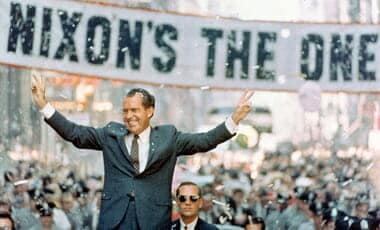RPT’s Comment’s After Article
Government Agent Whose Altered Email Enabled the Russia Hoax Won’t Spend a Day in Jail or Pay Any Fine
The Russia hoax undermined a duly elected president and continues to divide the nation. But one of the key figures who abused the trust of the people will not face prison time, reports Fox News.
Former FBI lawyer Kevin Clinesmith was sentenced to 12 months probation and 400 hours of community service Friday after pleading guilty to making a false statement in the first criminal case arising from Special Counsel John Durham’s investigation into the origins of the Trump-Russia probe.
That false statement had major consequences. The altered email cast suspicion on Page and thereby Trump, and created a false justification to wiretap Page.
[….]
What about the abuse of trust, the destruction of the FBI’s reputation, undermining the FISA court system, and the Russia hoax Clinesmith enabled and which still infects millions of American minds to this day?
“Altering the email has forever changed the course of my life,” Clinesmith said. “I have lost the means to provide for my growing family…lost the ability to give back to my nation… the shame and remorse will stay with me forever.”
The Trump presidency was not allowed to get off to anything like a normal start and was undermined by this case for most of its four years. Trump never truly overcame it despite being exonerated by the Mueller report, which found no American anywhere colluded with the Russians to impact the 2016 election.
Politico reports the prosecutors wanted Clinesmith to spend time in jail.
While prosecutors urged the judge to send Clinesmith to prison to send a message to others in government not to try something similar, Boasberg said he believed that message had already been sent.
Another message has been sent. Clinesmith will be the only Russia hoax figure prosecuted and he need not worry. Some left-wing foundation will give him a do-nothing job before long. Or CNN or MSNBC will give him an on-air analyst role.
(PJ-MEDIA)
POLITICO noted the judge saying “he believed that message had already been sent.” I doubt anyone in my own family — bedsides me and my boys and wife — knows that the Russian Collusion case has been shown to be a hoax. These are like retractions in a paper… front-page headlines splash the New York Times or the Washington Post, and then a month later a retraction is given on D3… which no one sees… so they think the headlines are still true. Trump was correct when referring to it as a witch hunt.
With declassified documents supporting the years of hard work by JOHN SOLOMON, CHUCK ROSS, SARA A. CARTER, or MOLLIE HEMINGWAY. Authors putting out excellent books like:
- “The Russia Hoax: The Illicit Scheme to Clear Hillary Clinton and Frame Donald Trump”
- “Witch Hunt: The Story of the Greatest Mass Delusion in American Political History”
- “The Plot Against the President: The True Story of How Congressman Devin Nunes Uncovered the Biggest Political Scandal in U.S. History”
- “Ball of Collusion: The Plot to Rig an Election and Destroy a Presidency”
Recent declassified documents do not add information to the issue, they merely show that the above authors of books and columns to be 100% vindicated!
People making decisions based off of the NYTs, CNN, NPR, ABC, NBC, CBS, Washington Post, MSNBC, and the like… were LIED to for 3-years. The result?
- Gallup Poll Shows 78% Of Democrats Mistakenly Believe Russia Changed Election Results
Not one intelligence agency or even Obama’s head of the Homeland Security Dept has supported that. I bet a lot of people (I would say almost all except for my sons) know the following:
- President Donald Trump rejects the narrative that Russia wanted him to win. USA Today examined each of the 3,517 Facebook ads bought by the Russian-based Internet Research Agency, the company that employed 12 of the 13 Russians indicted by special counsel Robert Mueller for interfering with the 2016 election. It turns out only about 100 of its ads explicitly endorsed Trump or opposed Hillary Clinton. Most of the fake ads focused on racial division, with many of the ads attempting to exploit what Russia perceives, or wants America to perceive, as severe racial tension between blacks and whites…. [RPT addition: about 50 were pro-Hillary]
Democrats and “Republicans” just continue to believe nonsense based on some late-night talk show comedians and CNN/NPR. (I say “Republicans” because many who claim to be “Reagan Republicans” would today think his favorite publication [HUMAM EVENTS] is for white supremacists.) The L.A. Times use to carry columns by Dennis Prager and other conservative thinkers. No more are they carried by the paper.
Frankly, it’s sad. And dangerous… they are ripe to believe BIG LIES about Republicans and Trump.
- Poll: 61 Percent of Democrats Say Republicans Are ‘Racist,’ ‘Bigoted,’ ‘Sexist’ (2016)
- 49% of Democrats think Trump voters are racist…. Fifty-seven percent (57%) of self-described political liberals believe those who vote for Trump are racist. (2019)
- 86% of Democrats think Trump is a racist
How do you make headway with these corporate news feeders of CNN/MSNBC?? I imagine Trump gaining in almost every major demographic means nothing to them? Trump gained more in these categories than in 2016…
- Male Hispanics;
- Female Hispanics;
- Male Blacks;
- Female Blacks;
- Female Whites.
The only category he lost numbers in since 2016 were white males. Like I say, Trump needs to go back to racism school. But the tactics of the Left have not changed a bit… just more people truly believe it. And they expect us to be civil, and unite — exactly when did Democrats practice the “civility” to which they wish to return?….
- When Barry Goldwater accepted the 1964 Republican nomination, California’s Democratic Gov. Pat Brown said, “The stench of fascism is in the air.”
- Former Rep. William Clay Sr., D-Mo., said President Ronald Reagan was “trying to replace the Bill of Rights with fascist precepts lifted verbatim from ‘Mein Kampf.'”
- Coretta Scott King, in 1980, said, “I am scared that if Ronald Reagan gets into office, we are going to see more of the Ku Klux Klan and a resurgence of the Nazi Party.”
- After Republicans took control of the House in the mid-’90s, Rep. John Dingell, D-Mich., compared the newly conservative-majority House to “the Duma and the Reichstag,” referring to the legislature set up by Czar Nicholas II of Russia and the parliament of the German Weimar Republic that brought Hitler to power.
- About President George Herbert Walker Bush, Rep. Maxine Waters, D-Calif., said: “I believe (Bush) is a racist for many, many reasons. … (He’s) a mean-spirited man who has no care or concern about what happens to the African American community. … I truly believe that.”
- About the Republican-controlled House, longtime Harlem Democratic Rep. Charlie Rangel, in 1994, said: “It’s not ‘s—-‘ or ‘n——-‘ anymore. (Republicans) say, ‘Let’s cut taxes.'” A decade later, Rangel said, “George (W.) Bush is our Bull Connor,” referring to the Birmingham, Alabama, Democrat segregationist superintendent of public safety who sicced dogs and turned fire hoses on civil rights workers.
- Donna Brazile, Al Gore’s presidential campaign manager, in 1999, said: Republicans have a “white boy attitude, (which means) ‘I must exclude, denigrate and leave behind.’ They don’t see it or think about it. It’s a culture.” The following year, Brazile said: “The Republicans bring out Colin Powell and (Rep.) J.C. Watts, (R-Okla.), because they have no program, no policy. … They’d rather take pictures with Black children than feed them.”
- About President George W. Bush, former Vice President Al Gore said: “(Bush’s) executive branch has made it a practice to try and control and intimidate news organizations, from PBS to CBS to Newsweek. … And every day, they unleash squadrons of digital brownshirts to harass and hector any journalist who is critical of the President.” Digital “brownshirts”?
- About George W. Bush, George Soros, the billionaire Democratic donor, said: “The Bush administration and the Nazi and communist regimes all engaged in the politics of fear. … Indeed, the Bush administration has been able to improve on the techniques used by the Nazi and communist propaganda machines.”
- Former NAACP Chairman Julian Bond, in a 2006 speech at historically Black Fayetteville State University said, “The Republican Party would have the American flag and the swastika flying side by side.”
- Former Gov. Howard Dean, chairman of the Democratic National Committee in 2005, described the contest between Democrats and Republicans as “a struggle between good and evil. And we’re the good.” Three years later, Dean referred to the GOP as “the white party.”
- After Hurricane Katrina, Democratic Missouri Senate candidate Claire McCaskill said George W. Bush “let people die on rooftops in New Orleans because they were poor and because they were Black.”
- Feminist superlawyer Gloria Allred, in 2001, referred to Colin Powell and Condoleezza Rice as “Uncle Tom types.”
- Then-Sen. Hillary Clinton, in 2006, said, “The (Republican-controlled) House of Representatives … has been run like a plantation. And you know what I’m talking about.”
- Debbie Wasserman Schultz, Democratic National Committee chairwoman in 2011, said “Republicans … want to literally drag us all the way back to Jim Crow laws.”……
I bet almost all of my family believes Trump mocked a disabled man’s handicap; think that when he said “there are fine people on both sides” he was saying there were “fine Nazis or white supremacists;” or think that racists and white supremacists have voted Republican in general; or that the bodies natural defenses in immunity are non-existent and only “vaccines” can bring immunity.
These are dangerous lies to believe.
Here is more regarding the latest declassified documents… one of the biggest lies the media has pushed in it’s life
The First Trump Declassified “Russia Document” Christopher Steele’s 2017 Confession To The FBI — Steele told FBI he leaked Russia collusion story to help Clinton and Great Britain, and was connected to his primary dossier source by former NSC staffer and impeachment witness Fiona Hill. (JUST THE NEWS)
….The FBI report of an interview agents conducted with Steele in September 2017, nearly a year after he had been terminated as an informant, provided explosive information about his motives in working simultaneously for the FBI and the opposition research firm for Clinton’s campaign. The document was obtained by Just the News and at times reads like a confession from the now-infamous former MI6 agent and author of the anti-Trump dossier.
Steele told agents that then-FBI Director James Comey’s decision to reopen the Clinton email investigation in fall of 2016 became his tipping point for leaking the anti-Trump collusion research that his company Orbis Intelligence had gathered and given to the FBI.
“STEELE explained that as the election season went on, they as a company were riding two horses — their client and the FBI — and after FBI Director James Comey’s reopening of the Hillary Clinton investigation, they had to pick one horse and chose the business client relationship over the relationship with the FBI,” the interview report stated.
“They followed what their client wanted, and they spoke to the press,” the report noted.
You can read the full interview report here.
You can read the notes of the interview here,
Steele and his partner Christopher Burrows even suggested the FBI deserved some of the blame for the decision to leak to the news media and Sen. John McCain’s office.
“STEELE and BURROWS described the overall situation as being one where it was ‘your [FBI] fault’ and ‘our fault,'” the memo reported, adding that Burrows was also upset the FBI had not paid Steele for his anti-Trump work.
The two British citizens told the FBI that concerns about the impact of a Trump presidency also motivated them…..
Mainstream Media before Trump was President and immediately when he set foot into the Oval Office was creating false stories about him. For instance, MLK’s Bust story an hour after Trump was elected: “On the evening of January 20, TIME White House correspondent Zeke Miller incorrectly reported that the bust of Martin Luther King Jr. had been removed from the Oval Office.” Most major news outlets carried it right away, and this was the beginning of 16 fake stories by early February that people ate up: Hence #FakeNews
The same people lapped up the phony Russia investigation, helping push the false narrative of Democrats for almost 3-years:
DECLASSIFIED DOCS
- …Page’s unwitting statements of innocence to informer Stefan Halper were never shared with the Foreign Intelligence Surveillance Court before it approved four warrants authorizing a full year of surveillance of Page’s communications…. (Declassified! The Russia Informant Transcript The FBI Didn’t Want Americans To See)
- …McCabe’s own notes from the May 16, 2017 meeting don’t mention that Rosenstein had been discussing firing Comey since January. But five days later in a new meeting, McCabe quoted Rosenstein as confirming the termination had been in the works for months and was not really driven by the Russia probe…. (Obstruction Boomerang: FBI Knew DOJ Was Preparing To Fire Comey Long Before Trump Ordered It)
- …Steele told agents during a September 2017 debriefing that longtime Clinton associate Cody Shearer wrote an earlier Russian dossier with unverified, salacious claims about Trump in April 2016. Shearer, he recounted, eventually routed it through a senior State Department official named Jonathan Winer to Steele, who then gave it to the FBI…. (‘A Trap?’ Clinton’s Russia Collusion Research Started Much Earlier, Made Steele Nervous | First Trump declassified Russia document: Christopher Steele’s 2017 confession to the FBI)
- According to the recently declassified FBI documents on the Russia collusion investigation, the FBI leadership refused to act on the FISA warrant application with regard to Hillary Clinton’s campaign because they chose to give her a defensive briefing instead, which was the opposite of what they did for Donald Trump’s campaign. (Declassified FBI Documents: FBI Leadership Gave Hillary Clinton Defensive Briefing, Ignored FISA Warrant Application)
People who believed in this stuff and made decisions based on it ARE the problem with our body-politic. More than Trump. Spreading lies that were bigger than Obama’s Iran Deal thingy and bigger than any Trump lie. Seditious lies cooked up by Hillary in 2016.

















